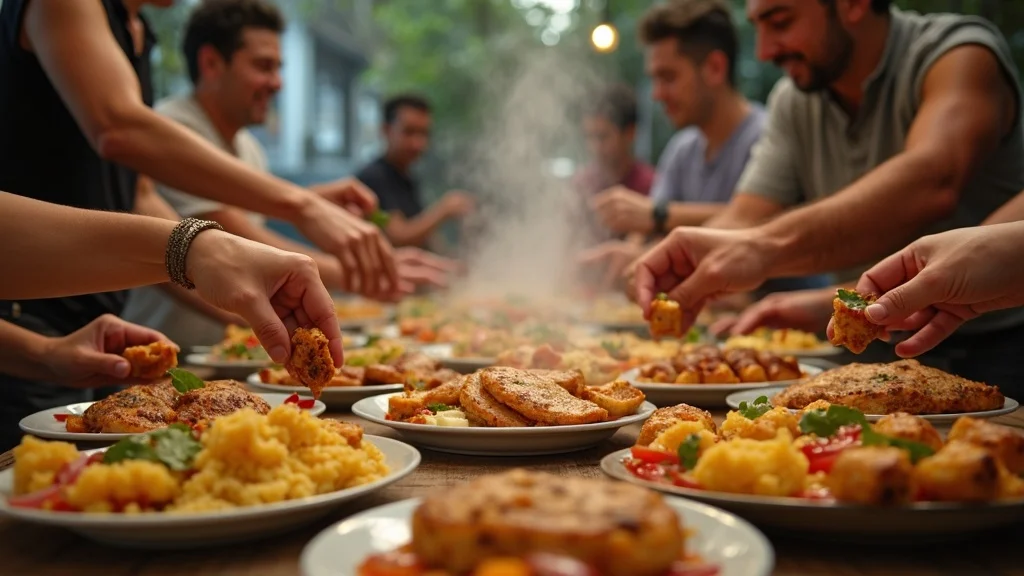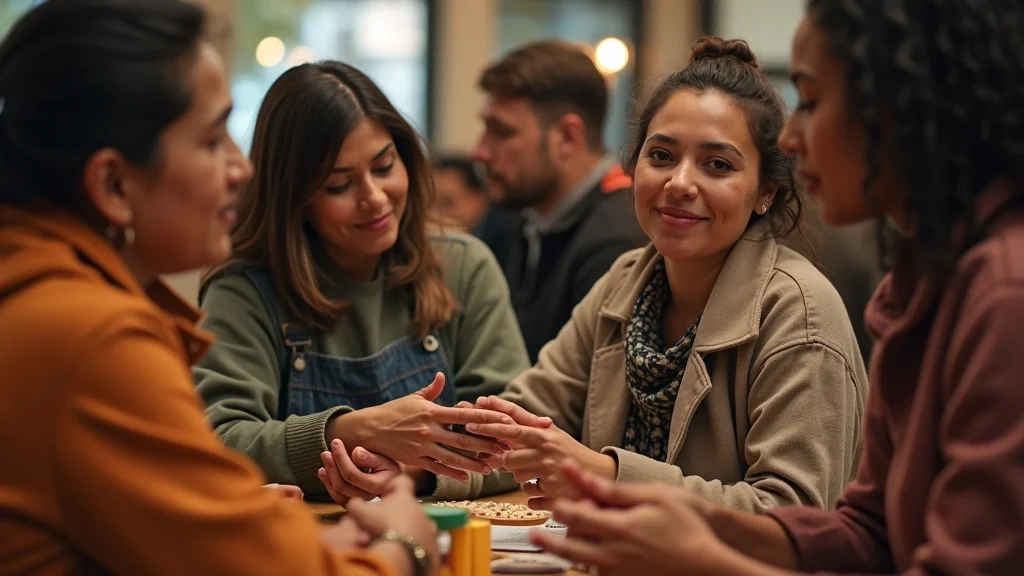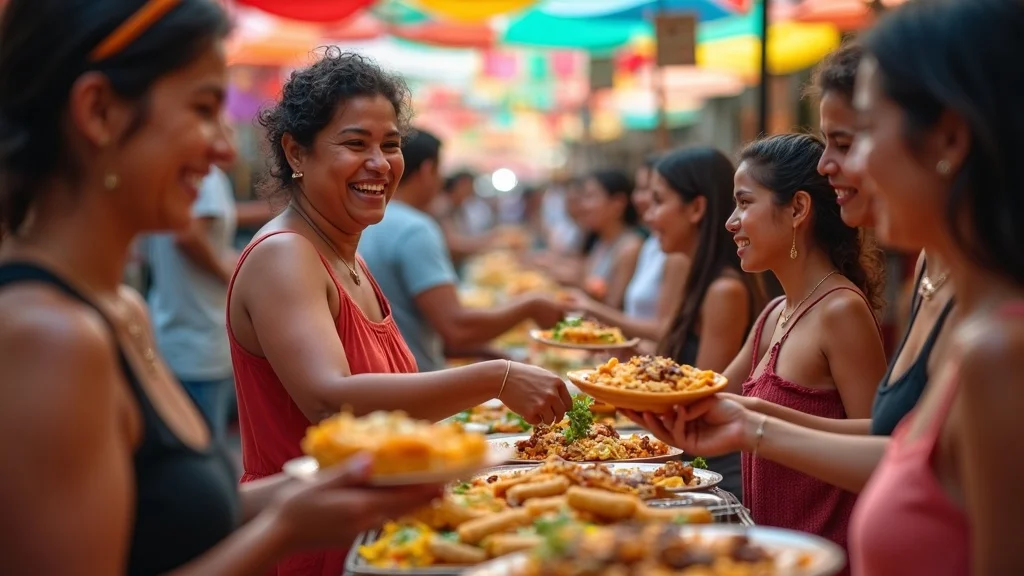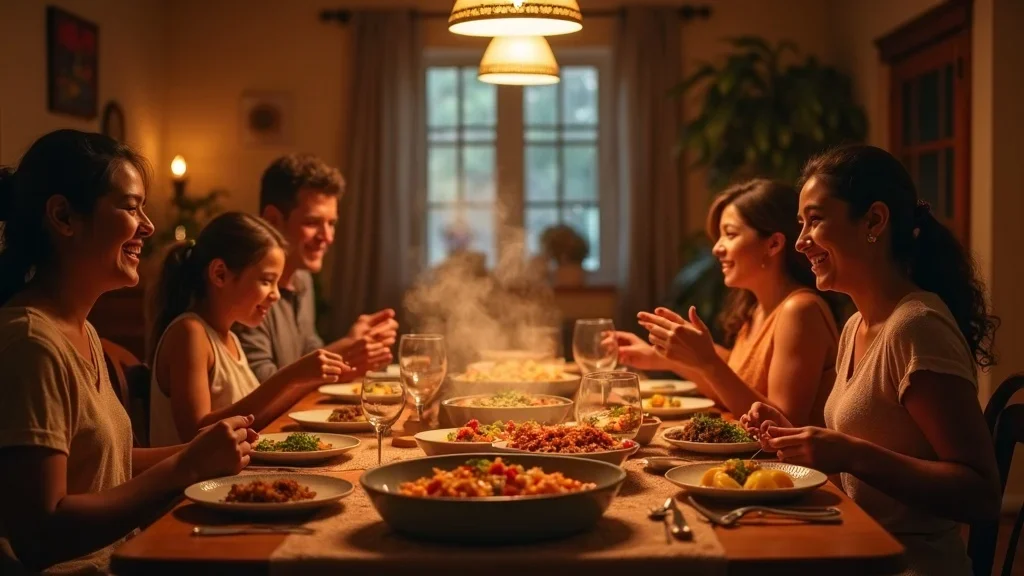“Celebrating culture is celebrating life.” As Hispanic Heritage Month concludes, let’s pause to reflect on the vibrant stories, heartwarming gatherings, and rich traditions that bring us together. This Hispanic Heritage Month wrap up dives into unforgettable moments, celebrates the cultural legacy we share, and explores how the spirit of unity and pride continues well past October 15th. Whether you joined a lively community parade, sampled Latin American culinary gems, or simply connected with your family’s heritage, embracing Hispanic culture enriches us all—uniting communities across the United States and throughout the Americas.
"Celebrating culture is celebrating life": Reflecting on Hispanic Heritage Month
Hispanic Heritage Month wrap up is more than a conclusion; it’s a powerful reflection on the importance of celebrating our roots. The month provides a dedicated space to honor the people, traditions, and values that shape Hispanic heritage, but its impact extends throughout the year. For families who gather over traditional meals, students who learn about historical leaders in public schools, and communities who unite in festivals, the essence of celebrating Hispanic and Latino cultures becomes woven into everyday life. Moments such as the colorful independence day parades for Costa Rica and El Salvador, and the highlight of a local football game with community celebrations, underscore the diverse experiences across Hispanic and Latin American countries.
As the spotlight shifts away from formal events, the core lesson remains: heritage month isn’t just about remembering the past, but about embracing Hispanic and Latino identities today. Sporting events, community showcases, and storytelling circles allow younger generations—whether in high school or community centers—to hear about Central and South American pioneers, learn about contributions of Hispanic culture, and express their own pride. Our ongoing connection to these traditions ensures that honoring our heritage isn’t just a month-long endeavor—it’s a lifelong celebration.
"Honoring our heritage isn’t just a month-long endeavor—it’s a lifelong celebration."
What You'll Learn from This Hispanic Heritage Month Wrap Up
Key cultural impacts of Hispanic Heritage Month wrap up
Most unforgettable moments and traditions of Hispanic Heritage Month
How the legacy of national Hispanic heritage continues year-round
Inclusive ways to engage with Hispanic heritage after heritage month ends

The Importance of Hispanic Heritage Month: A Cultural Legacy
How Hispanic Heritage Month Inspires Unity and Pride
Every September 15th through October 15th, the United States buzzes with parades, festivals, and cultural events that celebrate Hispanic Heritage Month. What makes these 30 days truly special is their ability to spark unity and foster pride within communities of Hispanic and Latino Americans, as well as their neighbors. From citywide parades to Latin American food festivals, these festivities unite people from Mexican, Puerto Rican, Cuban, and Central and South American countries—reminding us that diverse traditions build a stronger, more connected society. Families, friends, and neighbors—regardless of background—are invited to celebrate Hispanic culture through music, dance, and storytelling. These events not only strengthen bonds but also highlight the importance of passing on cultural pride to future generations, so that the legacy of Hispanic roots remains vibrant in every aspect of American life.
During the month, a sense of kinship and shared celebration is palpable. Whether at an NFL football game honoring Latin excellence with themed performances, or at a local celebration featuring folk dances and handwoven crafts, communities across the nation are reminded that heritage month extends far beyond symbolic gestures. The meaningful exchange of cultures—through music, food, sports, and shared stories—offers powerful reminders of the enduring influence and contributions of Hispanic and Latino Americans. These moments of unity and pride not only elevate awareness but inspire everyone to continue engaging with Hispanic heritage, long after the parades are over.

Insights on National Hispanic Heritage Month’s Impact on Communities
Behind the excitement of Hispanic Heritage Month are countless stories of community empowerment and cultural affirmation. Schools create lesson plans that spotlight Central and South American leaders, sharing the invaluable contributions of Hispanic culture—like science, literature, music, and civil rights activism—with new generations. Organizations and public schools host events that honor national Hispanic heritage and encourage discussions around identity, resilience, and legacy. Interviews with local advocates often reveal how celebrating Hispanic culture has nurtured new connections, fostered volunteerism, and inspired local projects, such as murals or bilingual literacy programs, that endure far past October.
One of the most visible impacts of the month is its ability to create inclusive spaces for celebration. Celebrations in small towns and big cities alike—from bustling South Florida to the coasts of California—showcase Latin American and Caribbean traditions in welcoming, accessible ways. Whether it’s Costa Rican Independence Day street fairs, educational workshops on Puerto Rican history, or pop-up markets highlighting Mexican crafts, the spirit of national Hispanic heritage month brings together people from all backgrounds to share, learn, and connect.
For those inspired by the culinary side of Hispanic Heritage Month, exploring traditional recipes can be a wonderful way to keep the celebration going. If you’re interested in trying a beloved Dominican dessert that’s perfect for family gatherings or community events, discover the story and preparation of maiz caquiao, a timeless treat cherished in Dominican culture. This dish is just one example of how food continues to unite and delight communities year-round.
Celebrate Hispanic Heritage Month: Top Moments
Community parades and cultural showcases: Bringing cities and neighborhoods to life with music, costumes, and pride-filled marches.
Traditional dance and music performances: Featuring salsa, merengue, mariachi, and folklórico that move both hearts and feet.
Spotlight on Latin American food and culinary events: From arepas and tamales to ceviche and mofongo, the month’s culinary delights leave lasting impressions.
Storytelling sessions highlighting Hispanic heritage: Sharing family stories, folk tales, and histories at local libraries and festivals.
Recognition of local Latino leaders and advocates: Honoring those making a difference in education, community service, arts, and civic life.
Highlight Reel: Most Memorable Hispanic Heritage Month Celebrations
Beyond the Month: Keeping Hispanic Heritage Alive All Year
Celebrating Hispanic Heritage through Latin American Cuisine
One of the most delicious ways to keep Hispanic heritage alive is through food. Latin American dishes have not only become central to heritage month celebrations but also serve as an everyday reminder of culture and tradition. From street foods like empanadas and arepas to festive family recipes for tamales and mofongo, every meal becomes a celebration of roots. In homes across the United States and in vibrant markets throughout Latin American countries, the aroma of traditional dishes summons memories that transcend generations, creating a tangible link to heritage. Local Hispanic food festivals—often organized by Latino-owned businesses or community groups—invite everyone to savor the dynamic flavors of South America, Central America, and the Caribbean, showcasing diversity while promoting authentic, shared experiences.
When you gather with friends or family for a simple meal, why not try introducing a dish from a different Latin American region? These culinary journeys not only delight the palate but also become a gateway to understanding the rich histories and rituals behind each recipe. From Peruvian ceviche to Venezuelan arepas, cooking and sharing Latin cuisine invites ongoing discovery—a delicious and meaningful way to celebrate Hispanic heritage long after the month has ended.

Supporting Local Hispanic Communities and Traditions
The true legacy of national Hispanic heritage month is found in the ways we continue to support Hispanic and Latino communities every day. By purchasing from Latino-owned businesses, attending cultural workshops, and participating in neighborhood events, we help preserve traditions and encourage the next generation of creators, entrepreneurs, and leaders. Programs in public schools, such as bilingual storytime or cultural heritage fairs, provide year-round exposure to the diversity and creativity of Hispanic cultures, inspiring meaningful connections among all students.
Supporting local organizations and community centers amplifies the impact of heritage month far beyond its official dates. Volunteering, donating, or simply attending a Latin American art show or football game organized by and for Latino communities, extends solidarity and fosters inclusion. Ultimately, celebrating hispanic heritage is about ongoing respect, curiosity, and joyful participation—making space for diverse voices and stories each day.
"La cultura es el alma de la comunidad." (Culture is the soul of the community.)
People Also Ask: Common Questions about Hispanic Heritage Month
What to post for the Hispanic Heritage Month?
During Hispanic Heritage Month, consider sharing content that highlights historic milestones, influential Latino leaders, favorite family recipes, or local cultural events. Photos of heritage month parades, videos of traditional dances, or stories celebrating community resilience are particularly meaningful. Quotes from Latin American authors, coverage of a high school football game honoring cultural diversity, or snapshots of culinary adventures with empanadas and tamales help connect with others while honoring Hispanic heritage. Ultimately, every post that amplifies contributions of Hispanic and Latino Americans or invites others to celebrate Hispanic culture adds value.

How to respectfully celebrate the Hispanic Heritage Month?
Respectful celebration starts with genuine appreciation and a willingness to learn. Instead of simply observing events, engage by asking questions about traditions, attending authentic cultural workshops, and supporting Latino-owned businesses. Participate mindfully in heritage month activities—such as food festivals, parades, or storytelling sessions—by honoring traditions and listening to the lived experiences of community members. Avoid stereotypes and embrace the diversity within Hispanic and Latin American cultures, from Central and South America to the Caribbean. By volunteering in community projects or sponsoring educational programs, you ensure your celebration is both meaningful and inclusive.
What is a good quote for the Hispanic Heritage Month?
A powerful quote that captures the essence of Hispanic Heritage Month wrap up is, “Honoring our heritage isn’t just a month-long endeavor—it’s a lifelong celebration.” Other inspiring options include: “La cultura es el alma de la comunidad,” meaning “Culture is the soul of the community,” or “Nuestro legado vive cada día,” meaning “Our legacy lives every day.” Quotes like these remind us of the joy, pride, and unity that come from sharing and preserving our heritage.

How do you say happy Hispanic Heritage Month?
The most common way to say “Happy Hispanic Heritage Month” in Spanish is “Feliz Mes de la Herencia Hispana!” When sharing this phrase—whether online, at events, or in person—add an authentic note by including a story or memory about your favorite tradition, dish, or family celebration. Sharing this greeting is a meaningful way to honor the heritage and strengthen the bonds within your community.
Interviews with Community Leaders on Hispanic Heritage Month’s Lasting Impact
Key Culinary Contributions from National Hispanic Heritage Month
Dish |
Country Origin |
Why It’s Celebrated |
Where to Find It |
|---|---|---|---|
Arepas |
Venezuela/Colombia |
Cultural staple and festival favorite |
Local markets, Hispanic food festivals |
Tamales |
Mexico |
Holiday and heritage festivities |
Community gatherings |
Empanadas |
Argentina/Spain |
Traditional celebrations |
Latin bakeries and delis |
Mofongo |
Puerto Rico |
Highlight at Hispanic Heritage events |
Caribbean restaurants |
Ceviche |
Peru |
Culinary showcases during heritage month |
Seafood eateries, pop-up events |

FAQs on Hispanic Heritage Month Wrap Up
How can I continue celebrating Hispanic heritage after the month ends? You can join cultural cooking classes, attend Latin American film screenings, volunteer at community events, or support Latino-owned shops and restaurants year-round. Immersing yourself in music, history, and local traditions keeps the celebration alive.
What are the best resources for learning about national Hispanic heritage? Visit cultural museums, follow Hispanic heritage organizations, participate in online courses, and read literature from notable Latin American and Hispanic authors. Community centers and local libraries also offer valuable workshops and resources.
Which traditions should I explore year-round? Explore traditions like Dia de los Muertos (Day of the Dead), folk dancing classes, culinary festivals, and storytelling sessions. Engaging in these celebrations provides a deeper understanding of the vibrant and diverse Hispanic and Latino cultures.
Key Takeaways from Hispanic Heritage Month Wrap Up
Hispanic Heritage Month wrap up deepens our understanding of community legacy
Authentic engagement celebrates the diversity of Hispanic heritage
Year-round connections sustain the spirit of heritage month
Culinary experiences are a gateway to exploring Latin American culture
Closing Thoughts: Continue the Hispanic Heritage Celebration Year-Round
Honor your heritage and community by exploring, sharing, and celebrating Hispanic traditions all year long.
Want to keep celebrating Latin American culture all year long? Explore festivals, traditions, and community stories in our Culture & Events section.
If you’re eager to expand your appreciation for Latin American heritage, there’s a world of flavors, stories, and traditions waiting to be discovered. Take your next step by visiting the Latin American Dining home page, where you’ll find inspiration for authentic recipes, cultural spotlights, and expert tips for celebrating Hispanic heritage every day. Whether you’re seeking new culinary adventures or deeper cultural insights, this resource is your gateway to a richer, more connected experience with the vibrant Latin American community.
 Add Row
Add Row  Add
Add 




Write A Comment